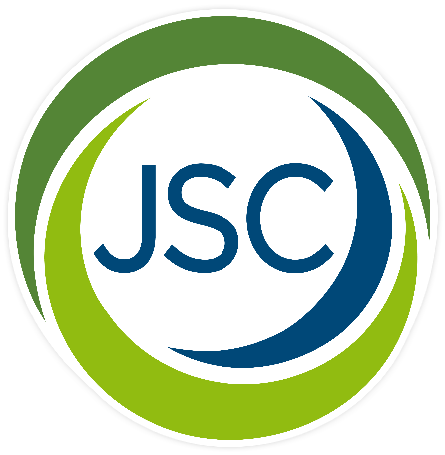 The abuse of opioids in the United States is a growing crisis. According to a recent CNN article, experts place the number of Americans who abuse or are addicted to opioids at more than two million. In 2011, the year opioid prescriptions reached their highest peak, oxycodone was the drug most commonly involved in fatal drug overdoses. Since then, due to tighter regulation, the number of prescriptions for opioids has decreased by 29%. As a result, fatal overdoses due to prescription opioids have also decreased. However, there is still a troubling connection between prescription opioid abuse and progression to cheaper and more dangerous street drugs. The National Institute on Drug Abuse estimates that three-quarters of new heroin users started out abusing prescription painkillers. A study from the Centers for Disease Control and Prevention (CDC) found that illicit opioids, specifically heroin and fentanyl, were the leading causes of overdose deaths between 2012 and 2016. Clearly, healthcare providers need to be mindful of the potential danger of prescription opioids. To that end, the CDC released a guideline for treating patients with chronic pain. In addition to outlining the risks and recommendations for opioid therapy, it strongly encourages physicians to first explore non-opioid treatment options.
The abuse of opioids in the United States is a growing crisis. According to a recent CNN article, experts place the number of Americans who abuse or are addicted to opioids at more than two million. In 2011, the year opioid prescriptions reached their highest peak, oxycodone was the drug most commonly involved in fatal drug overdoses. Since then, due to tighter regulation, the number of prescriptions for opioids has decreased by 29%. As a result, fatal overdoses due to prescription opioids have also decreased. However, there is still a troubling connection between prescription opioid abuse and progression to cheaper and more dangerous street drugs. The National Institute on Drug Abuse estimates that three-quarters of new heroin users started out abusing prescription painkillers. A study from the Centers for Disease Control and Prevention (CDC) found that illicit opioids, specifically heroin and fentanyl, were the leading causes of overdose deaths between 2012 and 2016. Clearly, healthcare providers need to be mindful of the potential danger of prescription opioids. To that end, the CDC released a guideline for treating patients with chronic pain. In addition to outlining the risks and recommendations for opioid therapy, it strongly encourages physicians to first explore non-opioid treatment options.
Other national healthcare authorities have also acknowledged the gravity of the situation. The Surgeon General recently published a report on the opioid crisis and detailed a 5-point strategy to address the issue. Along with encouraging better practices for pain management, the strategy includes a focus on improving access to prevention, treatment, and recovery services. To help fulfill this goal, more healthcare providers who are trained to understand and effectively treat addiction disorders are needed.
Addiction Medicine is currently a self-designated specialty focused on the prevention, evaluation, diagnosis, treatment, and recovery of those struggling with addiction, substance abuse, and related health conditions and requires certification from the American Board of Preventative Medicine (ABPM). A key aspect of attaining Addiction Medicine certification is the ability to prescribe certain restricted narcotics, particularly buprenorphine, for maintenance or detoxification treatments. According to the American Society of Addiction Medicine (ASAM), there are only 4400 addiction specialists, far less than the number needed to treat the millions of Americans struggling with addiction. Because addiction disorders affect patients on multiple levels – physically, psychologically, and behaviorally – Addiction Medicine specialists must draw from a variety of skills and disciplines to provide the right treatment. They often need to incorporate internal medicine, mental health counseling, and social work as they diagnose, treat, and care for their patients.
The Substance Abuse and Mental Health Services Administration (SAMHSA) recommends using medication-assisted treatment (MAT) to address opioid abuse. This holistic approach combines the use of FDA-approved medications (methadone, naltrexone, and buprenorphine), as well as counseling and behavioral therapy to treat patients. Under the Drug Addiction Treatment Act of 2000 (DATA 2000), physicians who go through the proper training are allowed to obtain a waiver to prescribe buprenorphine for patients. And in 2016, the Comprehensive Addiction and Recovery Act (CARA) extended the ability to prescribe buprenorphine to trained and waivered nurse practitioners and physician assistants. However, access to specialists, healthcare providers, and counselors who are adequately trained and able to provide medication-assisted treatment varies widely from state to state.
Rural areas, in particular, suffer from a shortage of providers. One analysis found that less than 2% of physicians with buprenorphine waivers were located in small and remote rural counties, which are also the areas hardest hit by the opioid crisis. In response, some states are exploring innovative approaches to combat this issue, as documented by the Agency for Healthcare Research and Quality (AHRQ). Vermont developed a successful “Hub and Spoke” model of care, where medication-assisted treatment was implemented in local primary care facilities with the support of regional and embedded expert support staff. The state of New Mexico pioneered a care model known as Project ECHO (Project Extension for Community Healthcare Outcomes). In this model, university-based experts utilize televideo tools to educate, consult, and mentor rural providers on treatment approaches for their patients. Another strategy, known as the Massachusetts Model, was created at Boston Medical Center. Nurse care managers (NCMs) play an essential role in this collaborative care model, shouldering much of the patient’s care management, and acting as a liaison between patients and waivered physicians.
In many ways, the nation and the healthcare industry are only now starting to recognize the complexities of opioid dependency, abuse, and addiction. Is your organization staffed with providers who are educated and knowledgeable about perceiving, preventing, and responding to the realities of this public health crisis? If you need assistance finding the right candidates for your organization’s needs, Jordan Search Consultants can help. Give us a call at 866-750-7231 or email us here.


